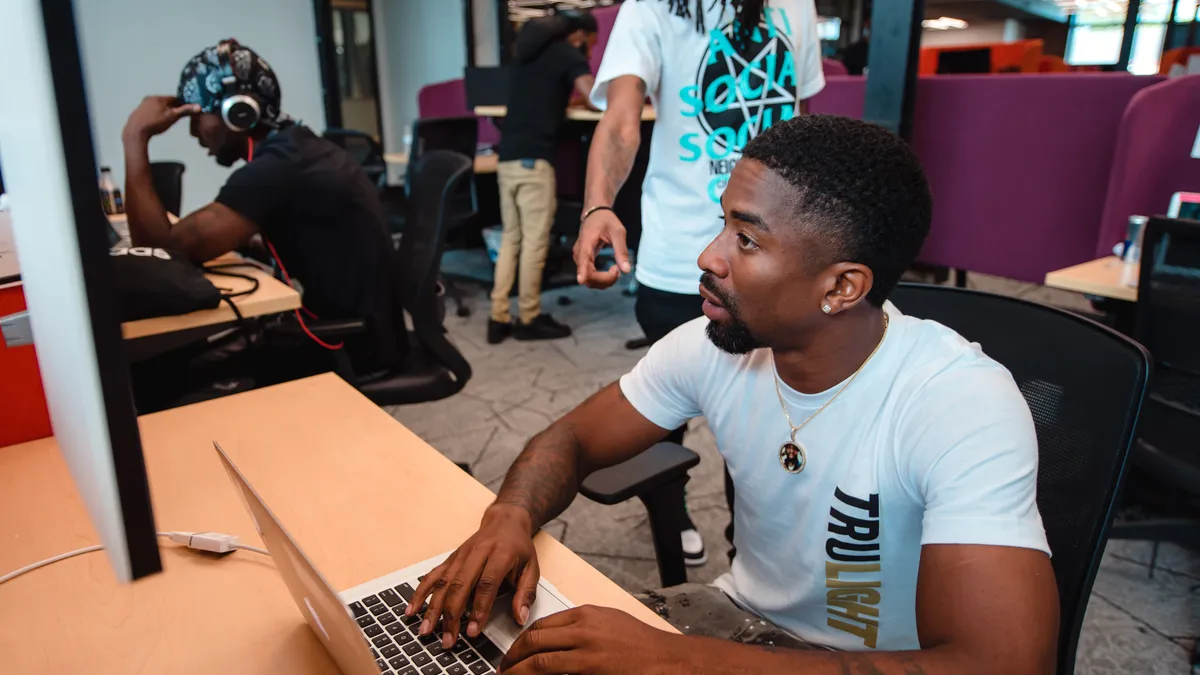In a port city in North Carolina, one brewery is using early and ongoing employee learning to advance a big goal: to end a cycle of gang violence.
TRU Colors brewery, a for-profit company, rejects the typical “second-chance” lingo and attendant mindset. “Although we hire active gang members, not all of them have felonies,” the company’s chief people officer, Khalilah Olokunola, told HR Dive. Some have attended college. Some have graduated. But none are “second-chance" hires — and all are team members, she explained.
In some ways, Olokunola’s job is like those of other CPOs, but in other ways, it’s quite untraditional. The company and its workers have grappled with the recent violent death of a team member and the stigma that often accompanies affirmation and elevation of marginalized people. “There's no blueprint for what we're doing,” said Olokunola.
To meet the needs of both the employees and the business, Olokunola said the company prioritizes cultivating relationships with new hires and continuous learning.
Pre-boarding and onboarding
From the beginning, treat the engagement of a new hire like the new relationship it is, Olokunola suggested. The onboarding process should invite new hires to imagine the breadth of their new adventure with a company. Olokunola encouraged HR pros to consider the entire onboarding process from the employee’s perspective, setting sights beyond the needs of the company. “It’s about extending the scope,” she said, to the needs of the individual being integrated to the company, or in some cases re-integrating to society from incarceration, or another lengthy time away from the working world. Sources have said that extended learning opportunities can be a powerful motivator and a deciding factor in decisions to stay.
Pre-boarding can be an opportune time to form a meaningful connection with a new team member. “I think welcome kits are great, but I think welcome conversations are even better,” Olokunola said. Intentional talk, maybe over coffee, in a role-specific pairing with someone that’s been with the company for a while, she explained, could hold more immediate value and may be helpful in cultural transitions.
For every role, whether in-person, hybrid or remote, the employee is being inducted into an organization, so the process of onboarding should be less about the company and more about the new team member — what they bring and where they fit into the narrative culture of an organization, Olokunola said; more creativity and evolution is needed.
Training
The way a company is able to attract an employee is not the way it will be able to retain and cultivate that employee, Olokunola said. Ultimately, it’s a company’s sustainability tools and response to their workforce that help employees maintain a first-day sense of pride and engagement.
HR pros have to become more courageous, approachable and fluent — able to speak with different people on different levels to personalize key pieces of the hiring process and the day-to-day relationship, Olokunola said. The Brooklyn native said she can “speak block and boardroom,” and that’s helped her to design a more humanized engagement strategy at TRU Colors.

To keep team members in place beyond onboarding, Olokunola said HR pros “should ask for team members’ feedback: ‘What are they looking for? What do they want?’ and then use that information to shape the offering. This way, there’s buy in.” Training plans should follow community feedback and interest, which can be captured through simple surveys.
Olokunola developed learning tracks for new hires at TRU Colors, with one specifically aimed at workers with a gang-related background. The program, Disrupt-U, builds life, social and business skills over an eight-week period that includes a speaker series, research, excursions and more. She said it’s a disruption formula that illuminates “what has to stop, start and continue” to achieve what team members want for themselves and their lives, beyond the workplace. It trains workers on personal finance, housing and transportation, as well as the company’s brand and product. And the trainings help TRU Colors become “a more diverse, equitable and inclusive workspace,” Olokunola said.
By making learning relevant for varied age groups and backgrounds, companies can seize an opportunity to keep valuable employees that came in fired up, she said.
Reboarding
Pointing to the Great Resignation, Olokunola said “there’s a reason people are leaving. They’ve placed a higher value on their values.” Employers deliberate “reboarding” for current employees may provide a boost to engagement and retention.
“I think reboarding has to be the new onboarding,” Olokunola said, as it can provide a refresher about the business and re-energize belief in the brand. Reboarding also can remind employees why they came, she said — and why they stayed.












